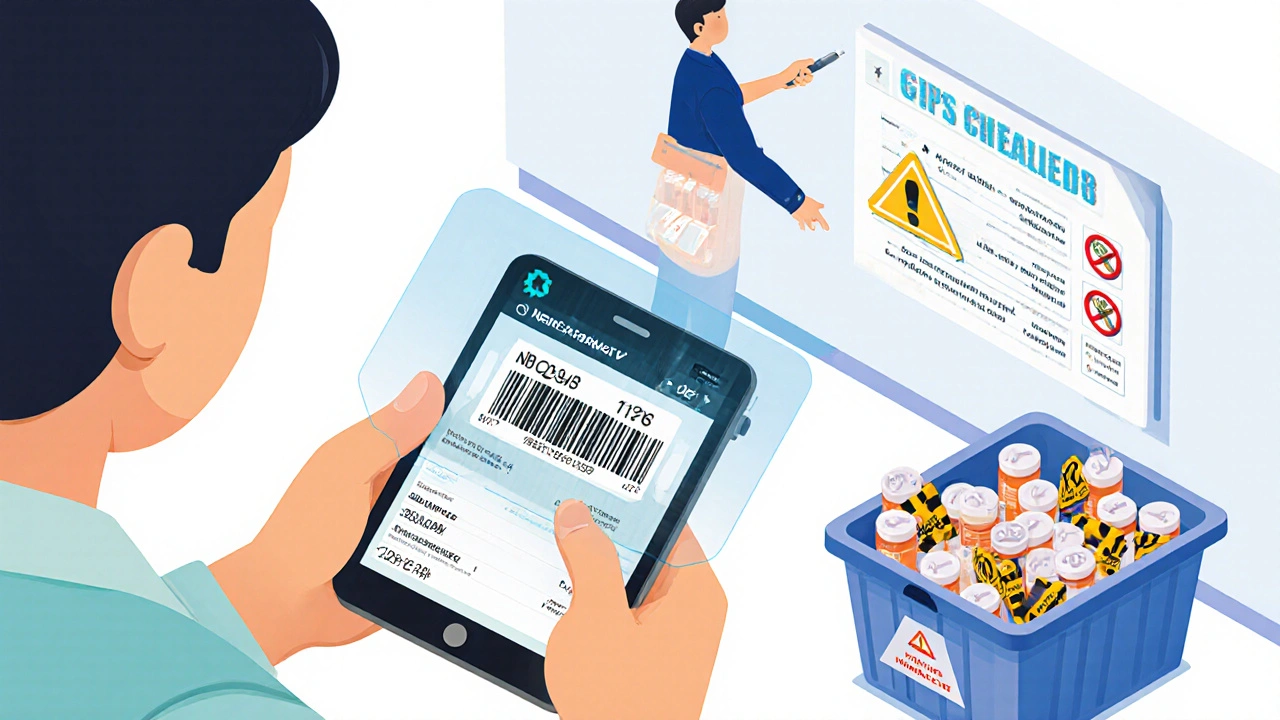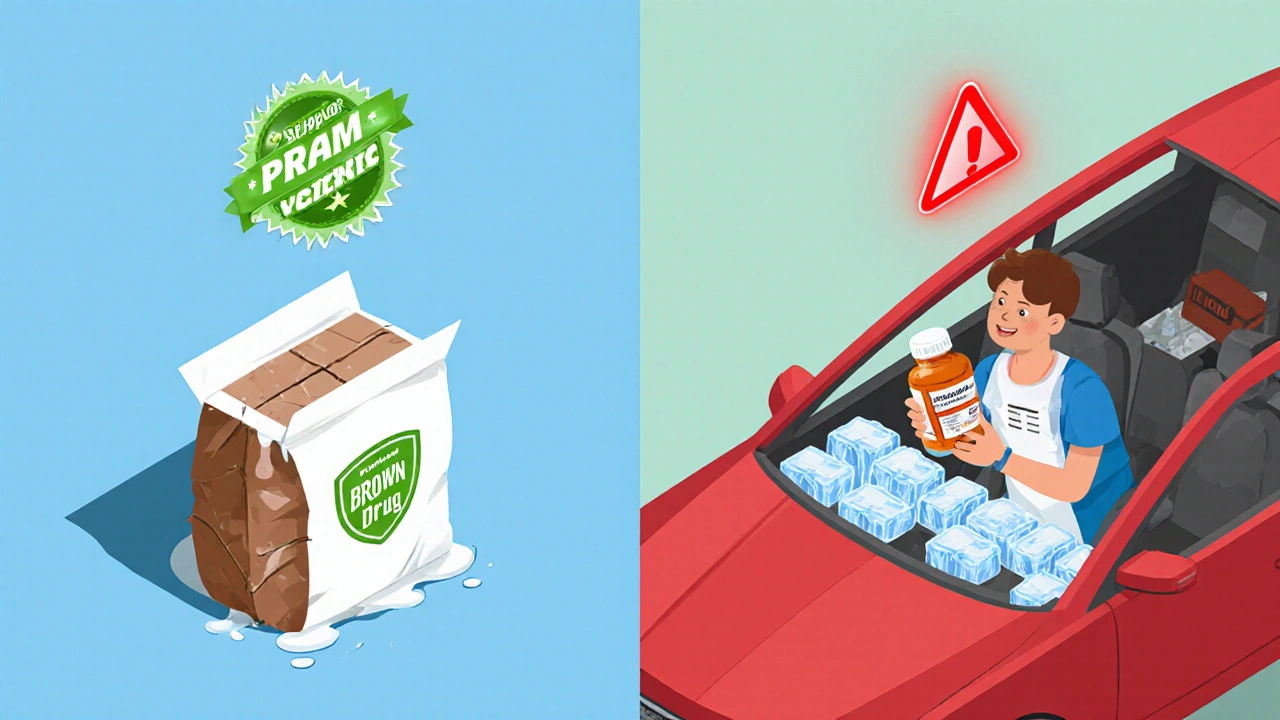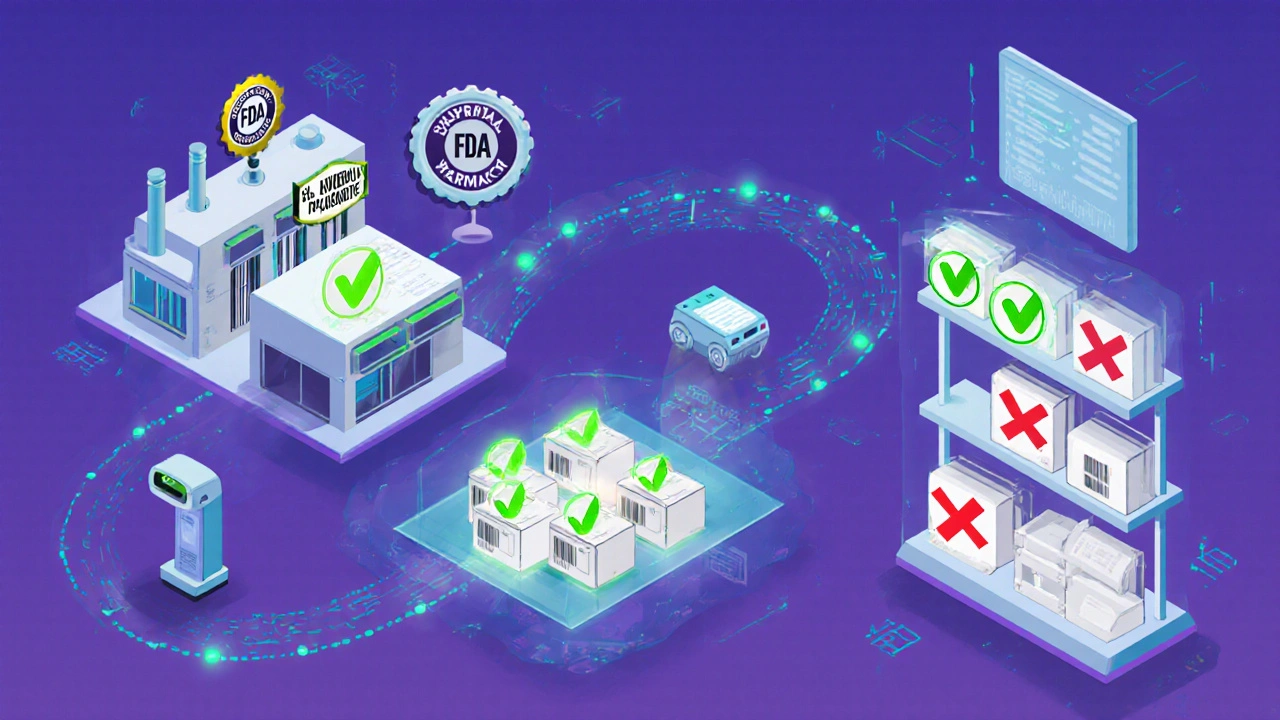Every pill, injection, or capsule that ends up on a pharmacy shelf has a story. And if that story doesn’t start with a verified manufacturer, a licensed distributor, and a paper trail that follows every step - it could be dangerous. Counterfeit drugs aren’t just a problem in faraway countries. They’re a real, growing threat in U.S. pharmacies, too. In 2023, the FDA reported over 2,100 suspicious drug diversion cases - up nearly 30% from the year before. The stakes? Patient safety. The solution? Strict, non-negotiable pharmacy sourcing requirements.
What Makes Drug Procurement ‘Legitimate’?
Legitimate drug procurement isn’t just about buying from a company that sounds official. It’s about following a chain of legal, technical, and operational rules designed to keep fake, expired, stolen, or contaminated drugs out of your hands. The backbone of this system in the U.S. is the Drug Supply Chain Security Act (DSCSA), passed in 2013 and fully enforced by November 27, 2023. This law requires every player in the supply chain - from manufacturers to pharmacies - to exchange electronic transaction data for every prescription drug package. That means: who sold it, who bought it, when, and what the product details are. No paper. No gaps. No exceptions.It’s not enough to just have a receipt. Pharmacies must now verify that every shipment includes three things: transaction information (what was sold), transaction history (who handled it before), and a transaction statement (a legal confirmation it’s legitimate). If even one of these is missing, the entire batch must be quarantined. One hospital pharmacy in Ohio held back $87,000 worth of medication in 2023 because the distributor’s system glitched during the data transfer. That’s not a glitch - that’s the system working as intended.
The Supplier Vetting Checklist
Not all suppliers are created equal. The American Society of Health-System Pharmacists (ASHP) laid out a clear seven-point standard for evaluating any drug vendor:- Current FDA registration and state pharmacy licenses
- Proof of compliance with current Good Manufacturing Practices (cGMP)
- Documented quality control systems
- History of recalls or adverse events
- Security measures to prevent theft or diversion
- Financial stability - no fly-by-night operators
- Full DSCSA compliance
Health systems that used all seven criteria cut medication errors linked to sourcing by 63%. Those using only two or three? No improvement. It’s not optional. If a supplier can’t provide proof of FDA registration or has a record of product recalls, walk away. Even if they offer a 20% discount. Counterfeit drugs don’t come with price tags - they come with risks.
What Happens When the Paper Trail Breaks?
The biggest vulnerability isn’t the manufacturer - it’s the middlemen. Wholesalers, specialty distributors, and third-party logistics providers are often the weak links. As of 2023, only 35% of U.S. health systems had fully integrated their electronic medical records (EMR), enterprise resource planning (ERP), and traceability platforms. That means data gets lost, duplicated, or misread. One pharmacy director in Texas told me: “We get shipments with NDC codes that don’t match the product. Sometimes the expiration date is wrong by two years. We have to call the supplier, wait for a response, and then decide: do we risk giving this to a patient?”That’s why barcode scanning isn’t a luxury - it’s mandatory. Every incoming drug package must be scanned and matched to the purchase order. If the National Drug Code (NDC), lot number, or expiration date doesn’t match exactly, the item is held. No exceptions. This step alone blocks over 80% of counterfeit attempts before they reach the shelf.

White Bagging, Brown Bagging, and the Hidden Risks
Some pharmacies use shortcuts to save time or money - and those shortcuts are dangerous. “White bagging” means a specialty pharmacy ships drugs directly to a clinic. “Brown bagging” means a patient picks up their own medication and brings it to the clinic. Both sound convenient. Both are risky.ASHP found that 42% of health systems using these methods had at least one medication error tied to improper handling. Think: a vial left in a hot car, a pill bottle opened and resealed, or a drug given to the wrong patient because the label was torn off. These aren’t hypotheticals. In 2022, a cancer patient in Florida received a dose of expired chemotherapy because the “brown bag” drug had been stored at room temperature for three days. The hospital was fined. The patient recovered - but barely.
Legitimate sourcing means drugs stay in controlled environments. Temperature-sensitive drugs - like insulin, vaccines, or biologics - must be kept between 2°C and 8°C. Any deviation? The product is destroyed. No second chances.
Who’s in Charge? The Role of the Chief Pharmacy Officer
You can’t outsource safety. That’s why 92% of academic medical centers now have a Chief Pharmacy Officer (CPO) - a dedicated leader responsible for procurement, compliance, and supply chain integrity. This person doesn’t just order meds. They audit suppliers, train staff, review DSCSA logs, and respond to recalls. In small pharmacies, that role often falls to the pharmacist-owner - who already works 50-hour weeks. It’s no wonder 65% of independent pharmacies spend over 10% of their budget just on compliance.Chain pharmacies have an advantage: they use group purchasing organizations (GPOs) that handle supplier vetting for dozens or hundreds of locations. Hospitals using GPOs with dedicated compliance teams reported zero supply chain incidents in 2022. Those managing procurement alone? Nearly one in three had at least one compliance issue.

The Cost of Compliance - And the Cost of Cutting Corners
Legitimate sourcing isn’t cheap. Since DSCSA launched, compliance costs for health systems have jumped 220%. You’re paying for software, training, audits, and staff time. But compare that to the cost of a counterfeit drug incident: lawsuits, reputational damage, patient harm, FDA fines. One 2023 study estimated that counterfeit drugs cost the U.S. healthcare system over $1 billion annually in avoidable hospitalizations and treatment failures.The big distributors - McKesson, AmerisourceBergen, Cardinal Health - control 85% of the U.S. market. They’re expensive, but they’re also the most likely to be fully DSCSA-compliant. Smaller suppliers may offer lower prices, but if they can’t prove their FDA registration or provide complete transaction histories, they’re not worth the risk.
What’s Changing in 2024 and Beyond?
The rules are getting tighter. ASHP’s updated guidelines, due in early 2024, will add new requirements for verifying compounders (503B facilities) and specialty drug suppliers. The FDA just got a $150 million budget boost - a 35% increase - to crack down on illegal imports and diversion. And by 2025, 73% of health systems plan to use blockchain-based traceability systems to verify drug origins in real time.Artificial intelligence is also stepping in. By 2026, AI tools will scan supply chain data for anomalies - like sudden price drops, unusual shipping routes, or mismatched batch numbers - and flag suspicious activity before a drug even arrives. Early tests show this could cut counterfeit incidents by up to 75%.
But technology alone won’t fix this. The real fix is discipline. Every pharmacist, every buyer, every administrator must treat sourcing like a life-or-death responsibility - because it is.
What You Can Do
If you’re a patient: Ask your pharmacist where your medication comes from. If they can’t tell you, ask why. If they say “It’s from a trusted supplier,” ask for proof - like the FDA registration number or the lot traceability code. You have a right to know.If you work in a pharmacy: Don’t skip the scan. Don’t accept incomplete paperwork. Don’t rush a shipment because “it’s been fine before.” One mistake can cost a life. And if your system doesn’t support DSCSA compliance - push for it. Your patients depend on it.
The system works - but only if everyone follows the rules. There’s no shortcut to safety.
What is the Drug Supply Chain Security Act (DSCSA)?
The DSCSA is a U.S. federal law passed in 2013 that requires all pharmaceutical manufacturers, wholesalers, and dispensers to create an electronic, interoperable system to track prescription drugs from manufacturer to patient. By November 27, 2023, all trading partners must exchange transaction information, history, and statements for every package - ensuring no drug enters the supply chain without a verifiable paper trail.
How do pharmacies verify if a drug is legitimate?
Pharmacies verify legitimacy by scanning barcodes to match National Drug Codes (NDCs), lot numbers, and expiration dates against purchase orders. They also require electronic transaction data from suppliers under DSCSA, confirm FDA registration and state licensing, and maintain records for at least six years. Any mismatch triggers an immediate quarantine.
Can I buy prescription drugs from online pharmacies safely?
Only if the pharmacy is verified by the National Association of Boards of Pharmacy (NABP) through its Verified Internet Pharmacy Practice Sites (VIPPS) program. Over 90% of online pharmacies selling prescription drugs are illegal. Never buy from sites that don’t require a prescription, ship from overseas, or offer drugs at prices that seem too good to be true.
What’s the difference between white bagging and brown bagging?
White bagging is when a specialty pharmacy ships a drug directly to a clinic or hospital for administration. Brown bagging is when a patient picks up their own medication from a retail pharmacy and brings it to a clinic. White bagging is regulated and tracked. Brown bagging is not - and carries high risks of improper storage, mislabeling, or tampering.
Why do some pharmacies use unverified suppliers?
Cost. Unverified suppliers often offer lower prices, especially for generic drugs or specialty medications. But this savings comes with massive risk: 63% more medication errors occur in facilities that skip proper supplier vetting. Many small pharmacies feel pressured to cut corners - but the FDA and ASHP warn that no price is worth patient safety.
How can I tell if my pharmacy follows proper sourcing standards?
Ask if they scan every incoming drug package, keep DSCSA records for six years, and only buy from suppliers with current FDA registration. Chain pharmacies and hospitals are more likely to comply. Independent pharmacies may not have the resources - but they should still be able to show proof of supplier vetting. If they can’t, consider switching.
